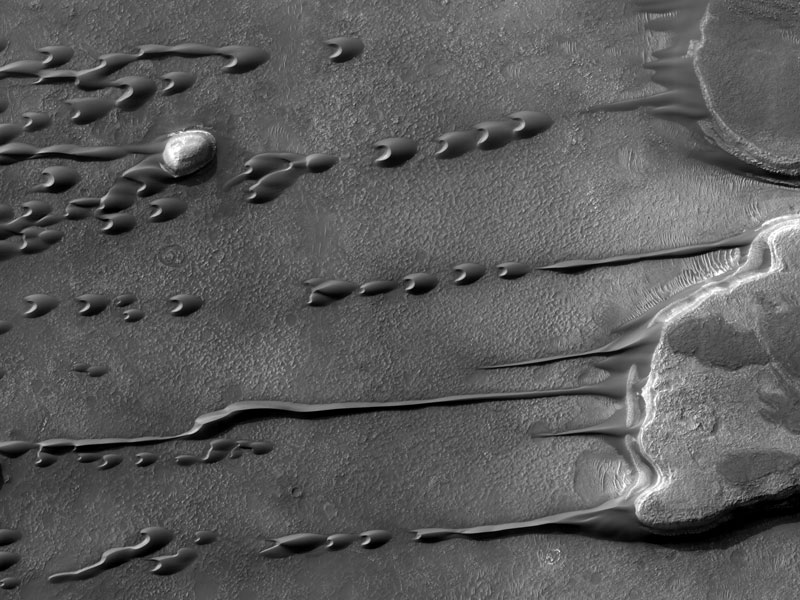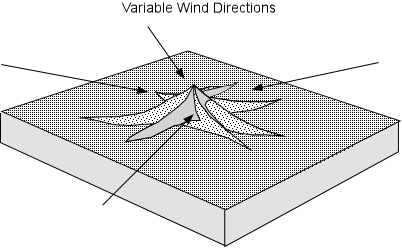FAQ – Dunes
To form a sand dune, abundant loose material (sand-sized particles), wind speeds sufficient ti move sand-sized particles, and a topographic obstacle (such as a small rock) are needed. Sand dunes typically form near a coast, shoreline, or in desert regions where the action of water has produced sand-sized material by erosion of the surroundings.
Longitudinal dunes elongate parallel to the prevailing wind direction, creating parallel ridges of dunes. These occur where the sand supply is neither high or low. Transverse dunes are perpendicular to the wind direction and occur where there is an abundant source of sand.
A barchan is a type of sand dune. Much of the surface of Mars is composed of fine sand and dust. Regional to global-scale dust storms on Mars (caused by solar heating of the thin atmosphere when Mars is closest to the Sun) can transport this material. Therefore, dunes exist on Mars and many are similar to ones found on Earth. When barchans get very large and string together, they form megabarchans.


Star dunes result from winds that low in multiple opposing directions, either as a result of seasonal shifts or where secondary windflow patterns are produced by topographic barriers.

